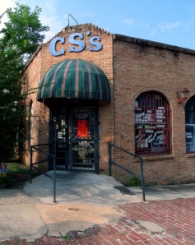Much like the ubiquitous pork belly, which seems to find its way onto every upscale menu at an exorbitant price these days, chicken wings were once considered very much a poor man’s pick when it came to buying meat.
Wings then more often than not found their way into a stock pot, but sometime in the late 1970s, a wings recipe came out of Buffalo that took the nation by storm and has become a staple.
Nowadays, chicken wings cost more than any other cut of chicken in the supermarket, and more than most beef or pork; $3.10 a pound today in my local meat department.
I’ve known Ed Komara, a native of Buffalo, for a very long time, ever since he was the curator of the Blues Archive at the University of Mississippi, so I asked him to give me his low-down on chicken wings, and here it is, in 7 points (no less):
REAL Buffalo wings are not battered, but rather deep-fried as-is. After frying, the wings are then shaken in a container with butter (or margarine) and hot sauce (in the cheap places, usually Frank’s Hot Sauce).
- The main effect of a true Buffalo wing is the immediate sharpness of the spicy heat, then a quick lowering of that spice.
- By contrast, the Rochester, NY version is battered and deep-fried, so as to hold more of the hot sauce (in a sticky/honey sort of variant) and make the spicy burn last for a long time in one’s mouth. (This is especially true of the wings made at Country Sweet in Rochester).
- In Buffalo, historically speaking, there are two main places for wings: the Anchor Bar, and Duff’s. The Anchor Bar was where wings were first served in 1964, to the owner’s son and friends as late-night munchies. The bar is located near the Allen Street, aka “Allentown” which is the bohemian arts section of the city. By 1990 when I went there, the “bar” became more like a restaurant serving some killer Italian food (including the richest pizza I’ve ever tried).
- Duff’s began offering wings in 1969. It is located conveniently on Sheridan Drive (on the cusp of city and suburb) for those who don’t really want to go all the way to Allentown for the Anchor Bar.
- There may be a missing link between the Anchor Bar and Duff’s. My dad remembered sometime in the 1960s that a couple of Buffalo Bills football players were partners in a chicken wing stand that brought wings to city pop-culture attention beyond the Anchor Bar. But I haven’t seen that documented anywhere.
- I don’t know where the heck the idea of including celery and blue cheese dressing with wings came from or why. It’s as gratuitous as applesauce with potato pancakes.
“Wing stands are pretty common in Buffalo,” Ed says. “Much less often seen are places serving beef on weck, the other distinctive Buffalo bar food. The ‘weck is short for kummelweck (or as the locals pronounce it, “kimelwick”), which is a salty bun. The one place among my haunts that served it was Anacone’s Inn (now closed, alas), which always seemed to have run out of beef on weck every time I arrived there (usually at 1 a.m.).
Here is the original recipe. Joint the wings, (discard the tips) then pat dry (IMPORTANT!) and deep-fry them until crispy. Toss in the sauce while hot. I used Crystal. They’re superb.
8 tablespoons hot sauce (Frank’s or Crystal recommended)
8 tablespoons unsalted butter or margarine
1 1/2 tablespoons white vinegar
1/4 teaspoon cayenne pepper
1/8 teaspoon garlic powder
1/2 teaspoon Worcestershire sauce
salt to taste








